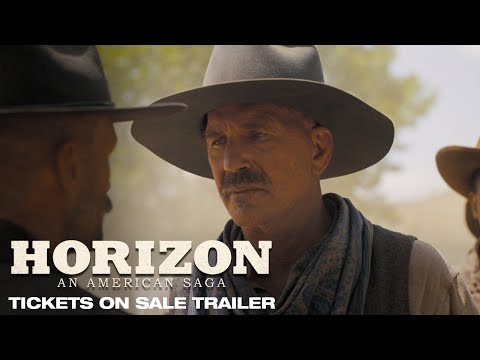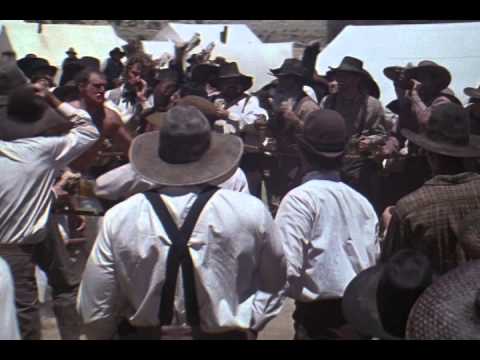Kevin Costner’s “Horizon: An American Saga – Chapter 1” isn’t the first time the actor took a massive risk in presenting a lavish, three-hour western during the summer movie season.

Thirty years ago, during the busy summer of 1994, Costner headlined Lawrence Kasdan’s “Wyatt Earp.”
Kasdan’s film, which covers a lot of the same ground as George P. Cosmatos’ “Tombstone” (or Kurt Russell’s “Tombstone,” depending on whose account you believe) arrived six months in theaters after “Tombstone” (1993).
To put it mildly, the timing of the release and the comparison between the two films put Kasdan’s film at a major disadvantage.

In the most expansive and thorough manner imaginable, Kasdan presents Earp’s childhood with his strong, inspiring father (Gene Hackman), Earp’s early marriage that ends in tragedy, then his transformation from a criminal into an infamous law enforcer, to the central figure of the gunfight at O.K. Corral.
We get much more, although the film stops short of giving us Earp on his deathbed.
To cut to the point: I’m a fan of this movie, which has wonderful moments, but sitting through the three hour and 11-minute running time is like binge-watching a series that is sometimes rewarding, sometimes frustrating.
“Wyatt Earp” deserves to be rediscovered and is far better than its reputation, though the quicker on its feet “Tombstone” is, without a doubt, the stronger and more focused of the two. Kurt Russell as Earp and Val Kilmer as Doc Holliday remain iconic figures in western cinema history, as does “Tombstone” itself.
Kasdan’s film is a true western saga, a sprawling character study of how Earp learns to become like his father: tough as leather, impossible to knock over and forever devoted to family. The story is about the development of a killer instinct and how it serves a young man who grows up amongst the most lawless and murderous creatures of the wild west.
Earp is introduced as naïve, boyish and inexperienced, aiming his pistol at the moon. As the story progresses, we see how cold, hardened and unflinching he is, as steely a killer as he is a lawman.
Earp’s dark night of the soul (after losing the love of his life) goes on too long and is the first instance where the film’s pacing starts to work against it. “Tombstone” barely knew what to do with its female characters – the scenes between Russell and Dana Delaney are embarrassing.
The love stories within “Wyatt Earp” are handled far better.
Kevin Costner reflects on releasing his Western epic Wyatt Earp just six months after Kurt Russell played Earp in the 1993 action film Tombstone. https://t.co/C2eQY6ZspB
— Screen Rant (@screenrant) May 24, 2024
On the other hand, “Tombstone’s” ensemble cast is better assembled, as the villains are vivid, the smallest roles are perfectly cast and even Jason Priestley is well suited for the film. In “Wyatt Earp,” aside from the above-the-title players, there are actors who are too contemporary for their roles (like Tom Sizemore and Bill Pullman) and the villains (played by Jeff Fahey and Lewis Smith) don’t come into focus.
Kasdan’s film is romantic about the west, while “Tombstone” is the brisk B-movie that gets right to the heart of the story. For a much fuller story, the true love story at the center, that being the brotherhood between Earp and Holliday, is better handled in “Tombstone,” with its moving final scene a master class between Russell and Kilmer.
Here, a title card concludes the involving dynamic between the two.
RELATED: COSTNER: AMERICAN SUCCESS STORIES AREN’T FAKE
Cosmatos’ film is rightly considered one of the greatest westerns ever made – over time, it’s even surpassed the popularity of Best Picture winner “Unforgiven” (1992) and Costner’s own “Dances With Wolves” (1990).
Kasdan’s film isn’t on the same level, though there are great scenes throughout, like how Earp gets deputized on the spot after instantly ending a shooting spree. James Newton Howard’s score has the strength and beauty of the best of John Williams.
Despite what many incorrectly state, “Waterworld” was neither a major flop nor the film that sidelined Costner’s career. Actually, the film’s box office and critic reception wasn’t bad.
A year later, Costner had a word-of-mouth hit with “Tin Cup.” It wasn’t until “The Postman” (1998) that Costner’s career looked like it cratered…until a year later, when “Message in a Bottle” was a surprise hit.
If Costner has anything in common with Earp, it’s his ability to reinvent and rebuild his reputation in the public eye. Neither Earp nor Costner has ever stayed on the ground after getting knocked especially hard.
Costner has always excelled playing characters with a dark side, which is why the second act of “Wyatt Earp” really cooks.
’Wyatt Earp’ starring Kevin Costner premiered in theaters 27 years ago today, June 24, 1994 pic.twitter.com/80ApN8h3hy
— RetroNewsNow (@RetroNewsNow) June 24, 2021
Another massive reason, and perhaps the biggest factor why this needs to be revisited, is Dennis Quaid’s take on Doc Holliday. it is a transformative, intelligent and funny performance.
Every scene Costner shares with Quaid is a great one. Quaid’s take on the character is different from Val Kilmer’s extraordinary turn in “Tombstone,” but let me say this- overlooking Kilmer for a Best Supporting Actor nomination is every bit as stupid as Quaid’s being overlooked for his work here.
Holliday isn’t an easy character to get right, let alone humanize. Kilmer’s work is a milestone in his amazing body of work, but so is Quaid’s performance, among the most surprising and richest in his career.
I’ve been told that there is a longer version of “Wyatt Earp” available overseas and that it’s far preferable. However you absorb the film, it is lengthy and falls short of “Tombstone” but ignoring it is to miss out on major acting highlights from Costner and Quaid, and a gem from Lawrence Kasdan that deserves another day in the sun.
The post How Costner’s ‘Wyatt Earp’ Set the Stage for ‘Horizon’ appeared first on Hollywood in Toto.
from Movies - Hollywood in Toto https://ift.tt/s63jRD4

0 Comments: